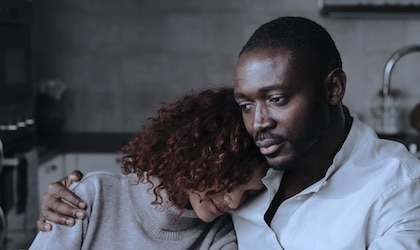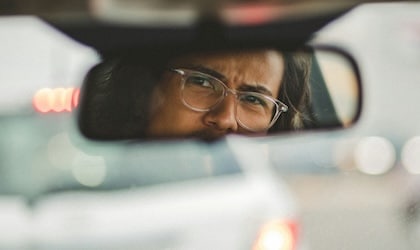Navigating a motor vehicle accident claim is not always clear-cut when you’re involved in a pedestrian accident. In fact, it can be downright daunting, particularly if a victim is unsure of how to proceed following such an accident, as both the pedestrian and the driver.
Today, we want to take a moment to break down the nuances of pedestrian accidents for injured victims (and their families) looking to pursue a claim.
Burden of Proof with a Pedestrian Accident
The burden of proof is a common term that may be thrown around during your motor vehicle claim.
The burden of proof generally falls on the injured plaintiff in an accident. In civil claims for personal injuries (motor vehicle accidents, slip and falls, assault, etc.), the burden of proof generally denotes that the plaintiff must prove that the defendant was negligent, and that this negligence caused the accident and resulting injuries.
But here’s the thing; pedestrian accidents are a potential exception to this rule, so long as the plaintiff meets the definition of a “pedestrian,” and the accident occured on a “highway,” as defined by the Highway Traffic Act.
If a plaintiff is in fact a “pedestrian,” and the accident did in fact occur on a “highway,” there is a reverse onus: the driver will be presumed negligent and will have to prove otherwise. It is insufficient for the driver to prove that they were not entirely at-fault for the accident, or to prove that the pedestrian was partly at-fault for the accident to satisfy this burden, the driver must prove they were NOT at fault for the accident. Keep in mind that it would be insufficient – to meet the demands of burden of proof – for the driver to prove that the pedestrian was partly at-fault for the accident.
So if you’re a pedestrian, the general rules may not apply. The burden of proof will fall on the driver/defendant instead.
Who Classifies As a “Pedestrian?”
In order to better understand the nuances of an accident, it helps to break down the terminology.
A “pedestrian” includes not only a person walking but also someone riding a bicycle/tricycle/unicycle or an electric or power-assisted (but non-motorized) bicycle and a wheelchair.
What Classifies As a “Highway?”
Where the accident occured matters.
A “highway” includes: a public highway, street, avenue, parkway square, place, bridge, viaduct or trestle, any part of which is intended for or used by the general public for the passage of vehicles and includes the area between the lateral property lines thereof.
What Does This Mean?
So if you’re a pedestrian involved in an accident that did not occur on a “highway,” as defined above, the pedestrian will bear the onus for proving that the defendant driver was at-fault.
An example of an accident on a non-highway would be a shopping mall parking lot, a public park, or the areas surrounding an apartment building.
When assessing liability, courts will look at a few key factors surrounding the accident:
- How did the accident happen, and did the pedestrian act reasonably and rationally in response to the events of the accident;
- Did the pedestrian and driver maintain a proper lookout; and,
- Was the pedestrian crossing at a crosswalk during the time of the accident?
These are considerations that will impact liability surrounding pedestrian-related motor vehicle accidents.
Contributory Negligence
Of course, we can’t discuss pedestrian accidents without touching upon the issue of contributory negligence, which can be an influencing factor within these types of personal injury cases.
Although it is not a complete defence, damages awarded to the plaintiff may be reduced due to contributory negligence. So if the injured plaintiff is partly responsible for the accident, this impacts how liability is attributed and therefore the damages the plaintiff receives following the accident.
There are two types of contributory negligence.
- Contributed/Caused the accident: When the injured party contributes to the accident itself through acts such as darting out onto a highway, stumbling onto a highway, not looking to see where they’re going, etc.
- Contributed/Caused the severity of the injuries: When the injured party acts in a way that contributes to their own injuries, like not wearing a helmet on a bike, which may have prevented a brain injury.
Contributory negligence is uniquely assigned depending on the specifics of the accident. No two accidents are the same – the nuances surrounding each case will differ depending on the accident, injuries sustained, and how both parties acted during the incident.
Of course, this is precisely why it pays to have a lawyer in your corner. A good lawyer will untangle the details surrounding the accident in order to develop an effective path forward.
The Bottom Line
Keep in mind that the accident benefits regime is a no-fault system. Whether you are at-fault for the accident or not, you can access different types of financial aid through the accident benefits regime.
If you’re a pedestrian who has been hurt by a driver, in addition to an accident benefits claim, you would also be able to pursue a tort claim against the at-fault driver.
As you can see, there are many intricacies surrounding pedestrian accidents. Different factors impact the way a personal injury case could play out, which is why it’s important to speak with a skilled personal injury lawyer who can help you understand your individual situation.
We Can Help You
If you’re not sure what course of action is the right one following a pedestrian accident, give us a call.
A lawyer can help you unravel the intricacies of pedestrian motor vehicle accidents, equipping you with the tools and knowledge to pursue a claim that gets you the damages you deserve.
With a lawyer in your corner, you can understand how these different variables affect your case as a pedestrian. A lawyer can help you analyze the specific circumstances around your accident and how they affect your case. Did you cross the road in an improper manner? Did the accident occur on what we classify as a “highway?” Did you contribute to the accident or your injuries? Should you pursue an accident benefits claim or a tort claim?
These are the questions that only a lawyer can answer. If you’re feeling anxious after an accident, and you’re not sure how to proceed or even assess your next step, call a personal injury lawyer. We offer free consultations because we want you to feel empowered to get the help and information you need.
Here at Gosai Law, we’re dedicated to helping you get the resolution you’re after. If you need help, we have your back.










